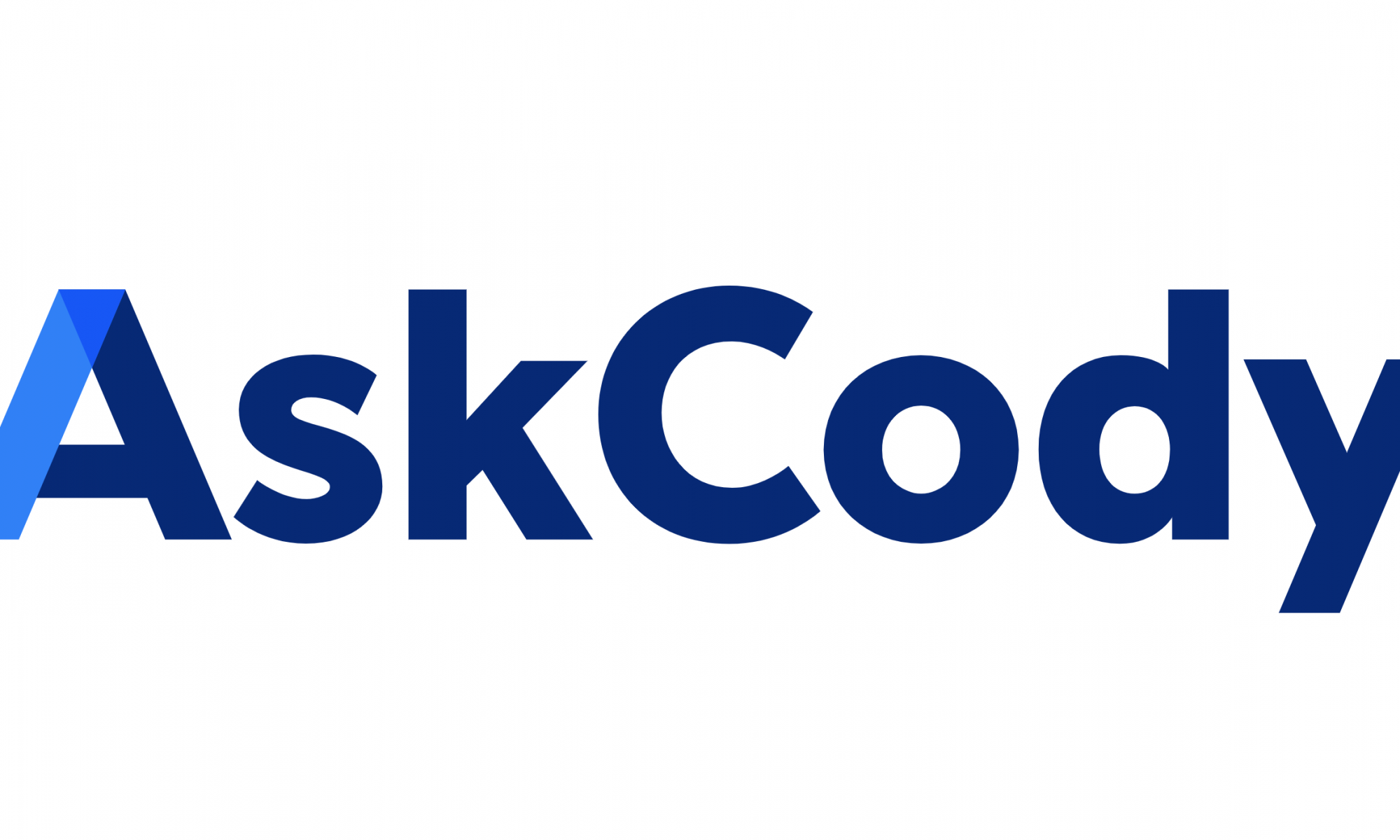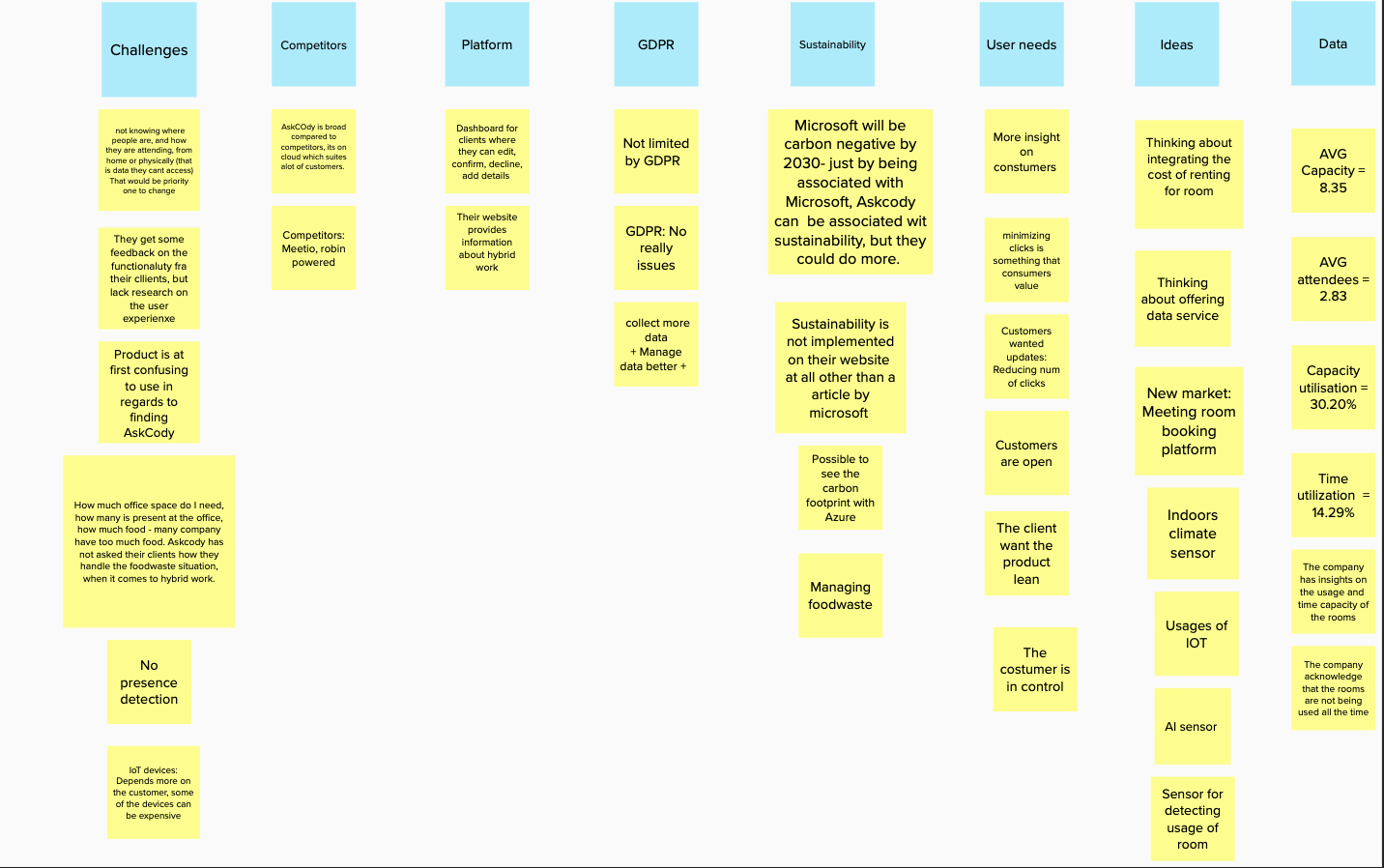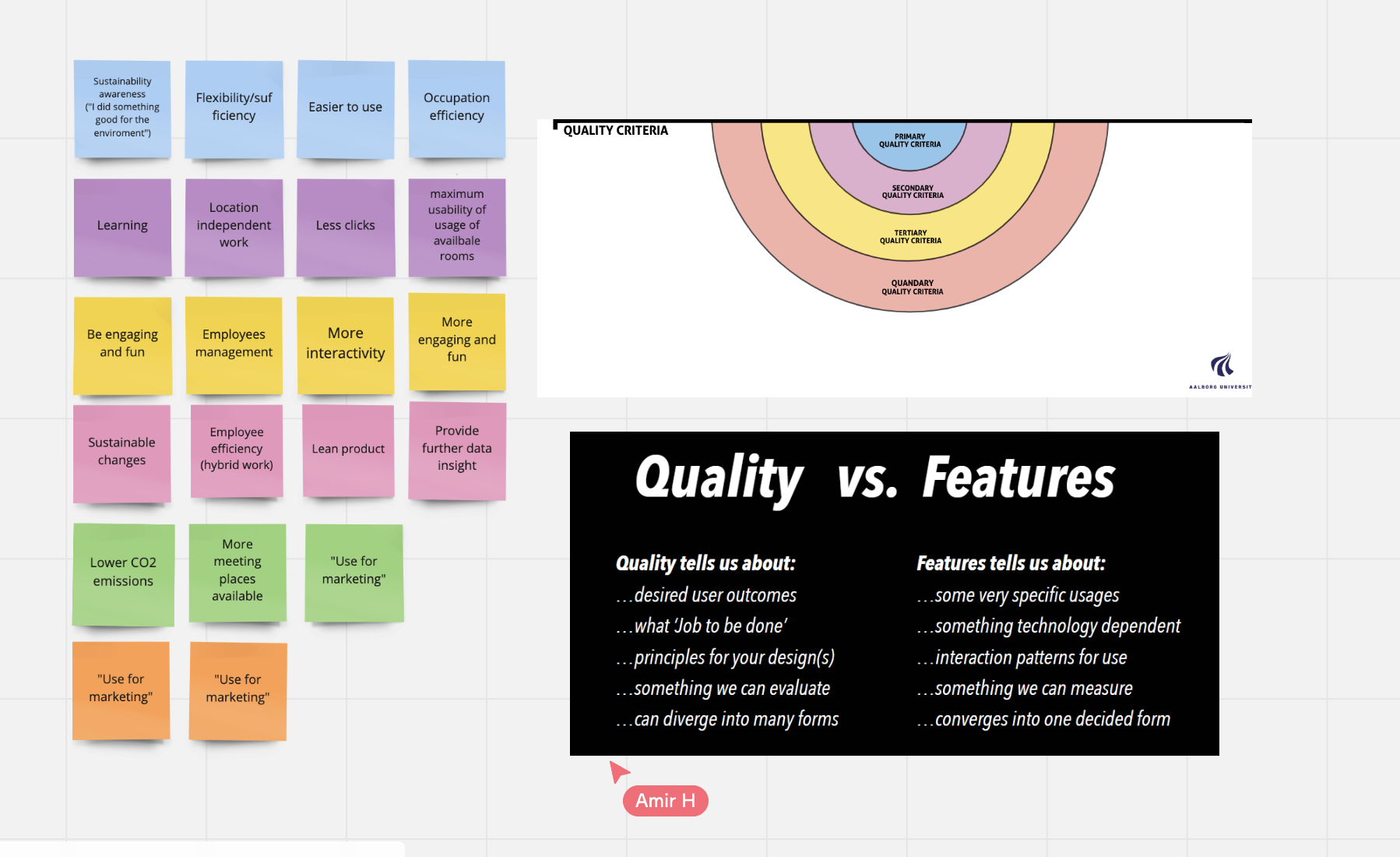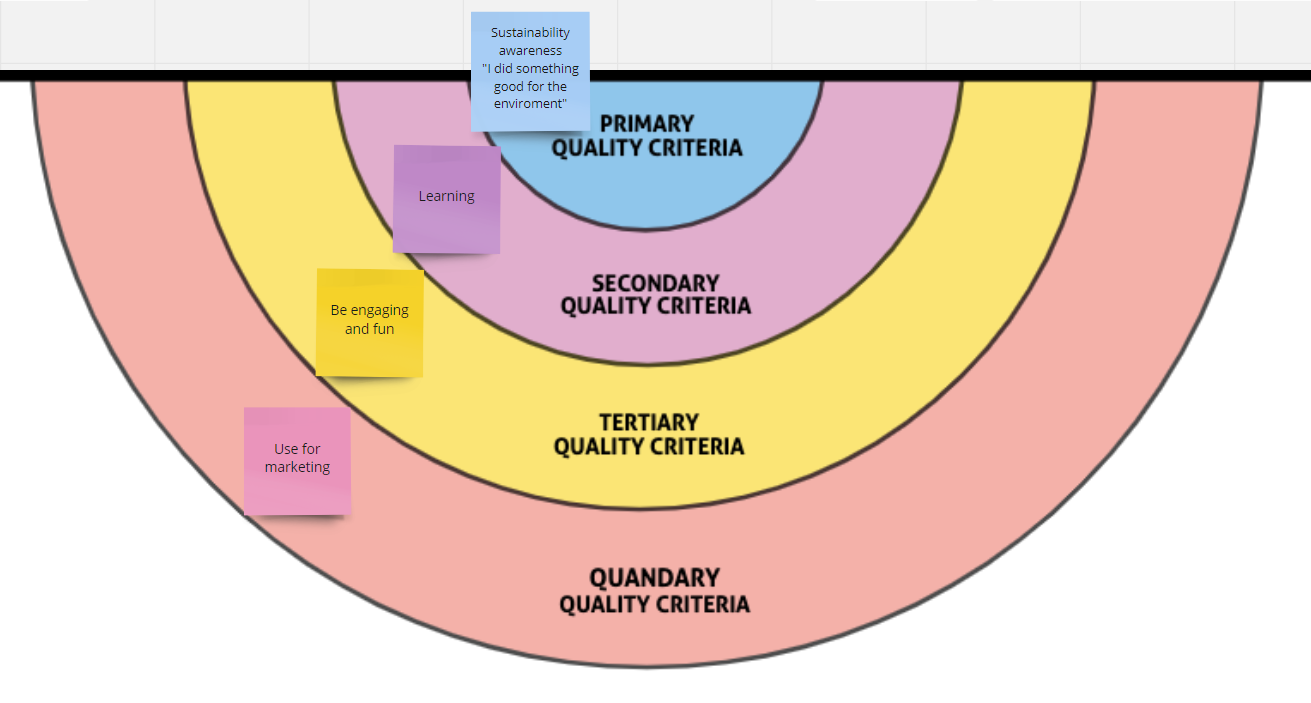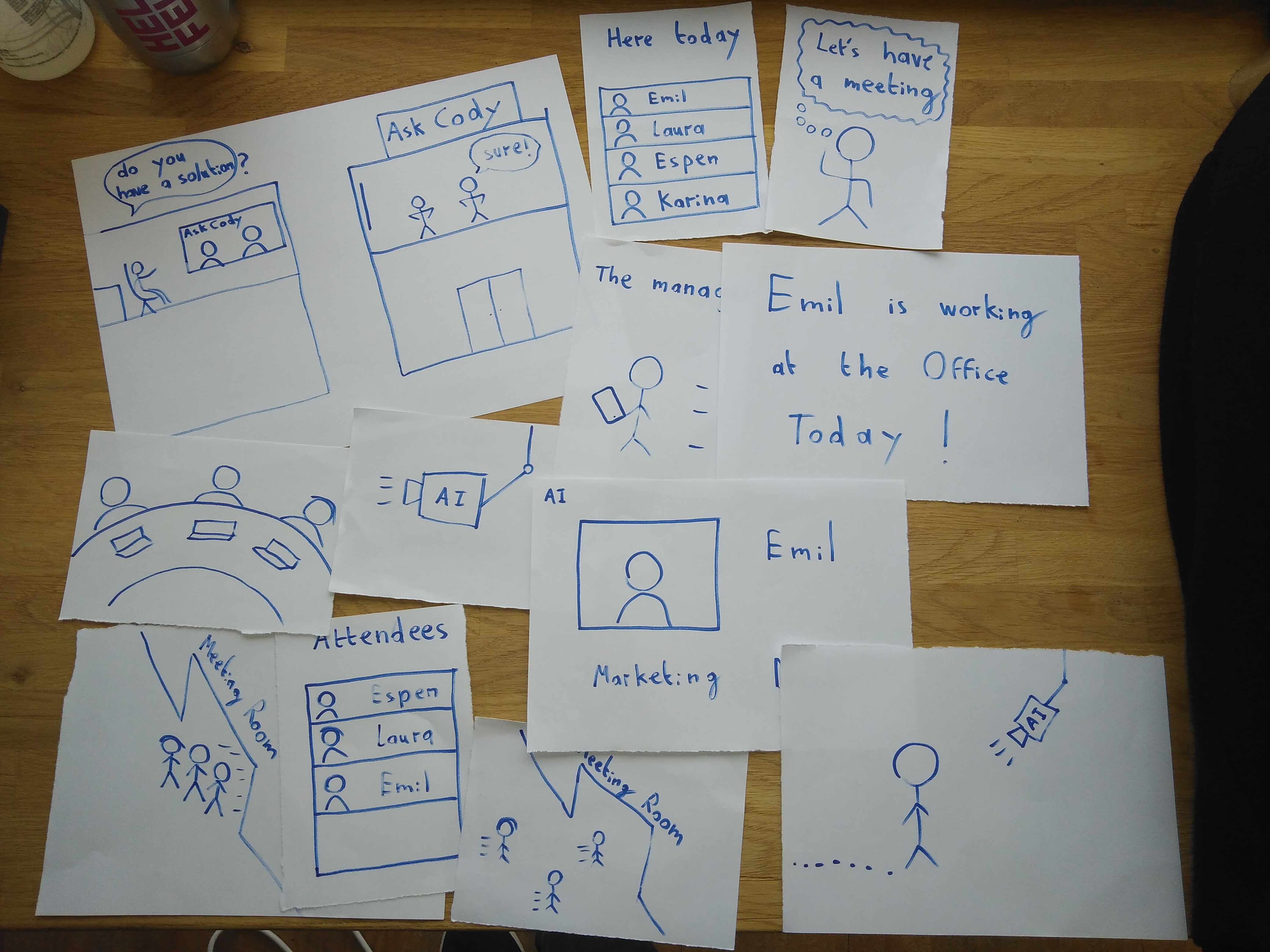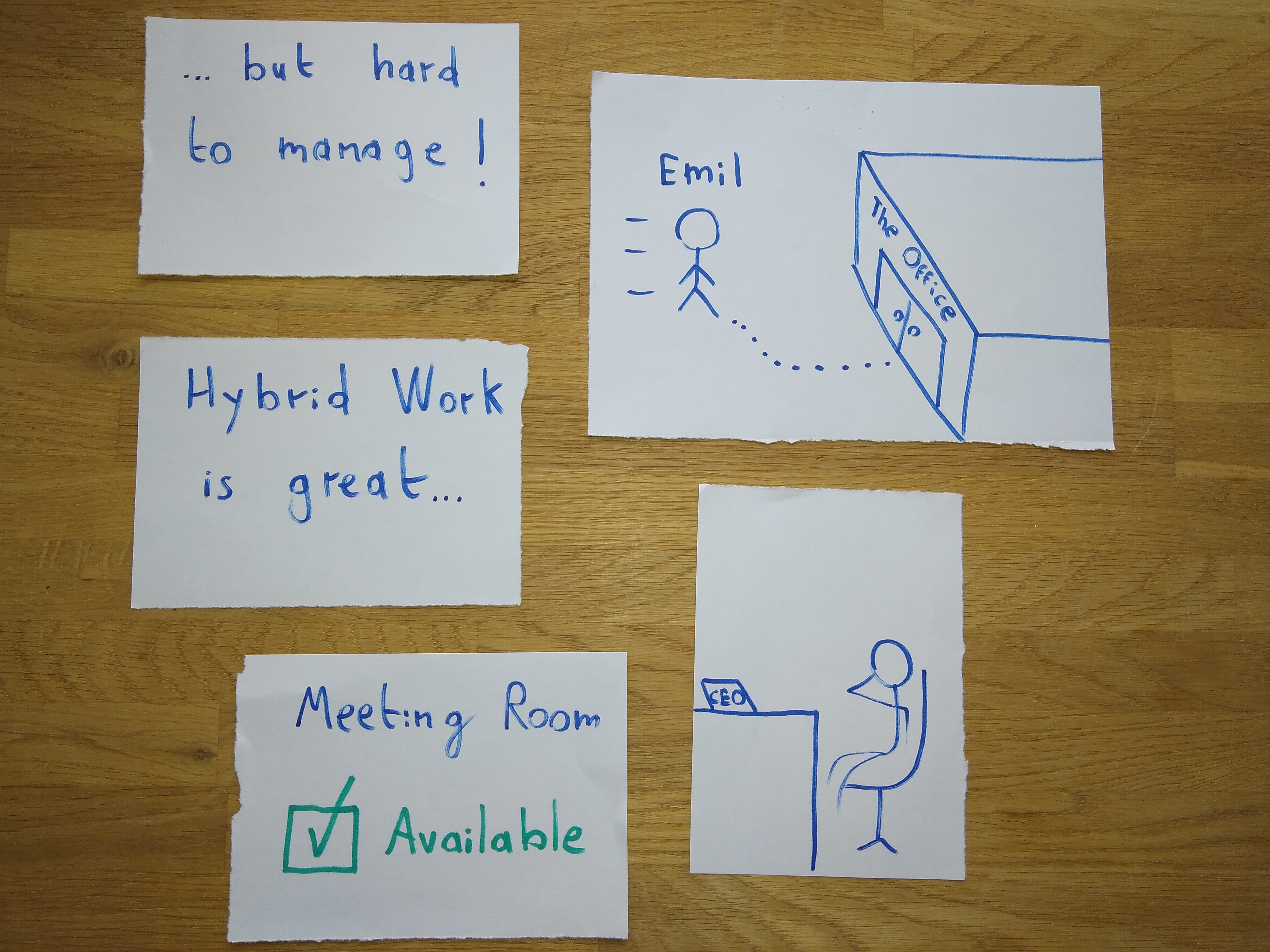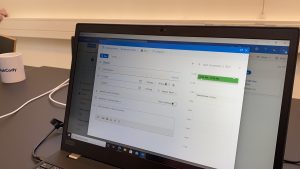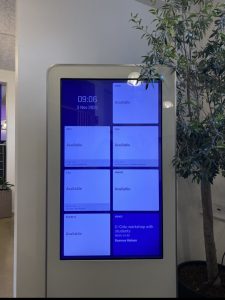We are group 4 and we will paste our work here.
GROUP MEMBERS:
Amir Hachaichi
Berfin Polat
Martin Tiedemann Elmely
Nanna Søballe Jensen
CASE DESCRIPTION
About AskCody
AskCody is a cloud-based SaaS company with head office in Aalborg and sales office in Boston, MA, USA. AskCody provides one of the global leading meeting management platforms – including meeting room booking, meeting services, visitor management, and workplace insights with Microsoft integration.
Challenge
With it’s product offering AskCody has the opportunity to be a key solution to both the climate challenge and support the new hybrid way of working:
How can AskCody be a solution that both support the trend towards hybrid work while also encouraging companies to lower CO2 footprint?
Criteria
The solution should cover
- how employees and employers will manage physical collaboration
- to which extend organizations will allow remote work and require physical show-up
- what the AskCody product will look like to meet the challenge
FINAL CASE VIDEO
Our concept/proposal for AskCody is to encourage hybrid work on their already existing app, as well as engaging their customers to be more sustainable. We think that the process of being more sustainable should be a learning experience for the customer. Here, it is not about making the customer feel bad for not being sustainable enough, but more about engaging and making the experience fun for the customer. Also, it should not feel like an extra workload/or task to be sustainable – but somehow make the customer aware that they are doing something that’s good for the environment, because we believe that it will bring value to the customer.
AskCody can partake in awareness of sustainability by giving customers the option to be more sustainable. We have chosen the solution of adding new features to their app, as a way to implement more sustainable choices for the customer. Features such as, hybrid work calendar, in office/at home feature, visibility of greener choices, information about how to be greener, carbon footprint calculator, profile.
All these features can in the end encourage the customer to be more green without forcing it upon them but letting it be an option for them.
DESIGN PROCESS
PLAN FOR EMPIRICAL WORK & FIELDWORK
Our process of collecting empirical data involves meeting the case partner and getting insight into what problems the company is dealing with. The empirical work/data is collected by observations and interviews made during their visit to AAU and our visit to AskCody headquarters. At the visit, we got to test out the platform ourselves, where we got to book a meeting, book a room, order catering, and invite visitors and got to observe how a common user of the platform navigate around. Additionally, employees from different departments introduced their position at the company, insight into their field of expertise, and answered the questions that we have had.
DELIVERABLES
Affinity diagram – Our process and insights
We used a website mural to create our affinity diagram. Our affinity diagram has the purpose of organizing and categorizing our data, which is based on our observation and usage of the platform, information, and ideas of the data collected through our own research of the company and the interview made on the fieldwork day. At first, we have written every point down from the interview/field visit down, as these notes provided great insight into how the platform works and may provide insight into what areas we need to focus on. After having written everything down into mural, we could begin the process of categorizing the data. Here we looked at reoccurring themes or similarities and by that creating headlines for them. By discussing the organizing/categorization of our collected data/notes, we got to touch upon different areas of directions of our research field and narrow it down to what was most relevant.
Core design
In Core Design philosophy everybody on the design team makes decisions about the product quality. In doing so we needed to think in terms of value and thus not yet be too feature-focused. It was actually a difficult task deciding on the desired core qualities, because it was very easy to let our minds slip in regard to the feature-focused solution. Although while taking our affinity diagram into account we managed to come up with three core designs or innovations tracks: one that focused mainly on sustainable awareness on the customer part; one that took smaller business/potential customers into account and making a kind of Airbnb for those who lacked the meeting room space; and one that could promise usage of all meeting rooms by providing insight on how and why the meeting rooms are or are not being used in order to increase room efficiency.
We presented the three innovation tracks for AskCody, and they were fond of the sustainability awareness track, because it seemed the most doable and invited a lot of creative thoughts into the design process. Thus we agreed upon the core. The primary quality criteria of the core aims at making the customer feel that they are making an environmental difference, which as a secondary quality criteria invites a learning experience for the customer increasing the potential of sustainable behavior in general. In that way we want to empower the customer to be more sustainable. As a tertiary quality criteria we want to make it fun and engaging, and thus not making the customer feel like they have to complete an extra set of tasks or that it’s a burden to be more sustainable. As a quandary quality criteria it will generate value in AskCodys marketing.
Re-cap of Askcody meeting and the decisions made
We came to the meeting with three proposals to deliver to AskCody. We went through the proposals one by one, and afterward, we discussed the proposals in terms of their perspective, the possibilities, and their opinion on which one was ideal to pursuit with. We could both agree upon choosing the design core named ‘sustainable awareness and lowering CO2’, as this was the approach they were what they want to aim for. Above, you can read about the different core designs and the one we have chosen to go with.
HMW – How Might We
We started out making several “How might we”-questions each. We ended up with nine different questions, and afterwards we voted on which questions we liked the best.
Two questions was left, and these we combined into one “How might we”-question, which is the following:
“How might we evolve upon AskCody to satisfy the demand for hybrid work, while making the solution have a positive impact on the environment, in which the customer will feel like they are doing an environmental difference before, during and after a meeting?”
The four of us started listing ideas, whereas we chose two ideas each and thereby summed eight ideas or solutions for the “IDE Kutool” framework.
As the next step we discussed the eight solutions for our ability to exclude three of them.
At last, we started listing eight alternatives and / or improvements for each of the five solutions. We had a hard time finding 8 alternatives for the five solutions, and therefore we ended up with approximately 25 alternatives in total, in which we were to decide, which three of them we wanted to go with.
Sketching
First of all, we wrote down our storylines for our sketches and afterward sketched them down. When we then had discussed the purposes and the features of the different sketches, we began to film the sketches.
First sketch: Hybrid work – visibility of being in office or at home
Hybrid work management with the help of an AI camera
The audience liked the video itself, but some questions related to privacy and GDPR were raised, and it seems that most people are uncomfortable with the idea of having an AI camera in the office. We did not use any part of this video for the final presentation, but we got some training using video editing tool and the “green screen box”.
Booking
Catering:
In this short sketch we show how we imagine that the sustainable foodchoice can be implemented in the app. We suggest that the canteen of every company should have access to the app as well, and then be able to type in what the sustainble foodchoices would be every week, perhaps every day. For example if there is left over lasagna or they have a lot of tomatoes in stock, then it would be a sustainable choice to chose this option for the meeting in order to reduce foodwaste.
PICTURES FROM FIELDWORK
Sketching
Final presentation – Nov 12

